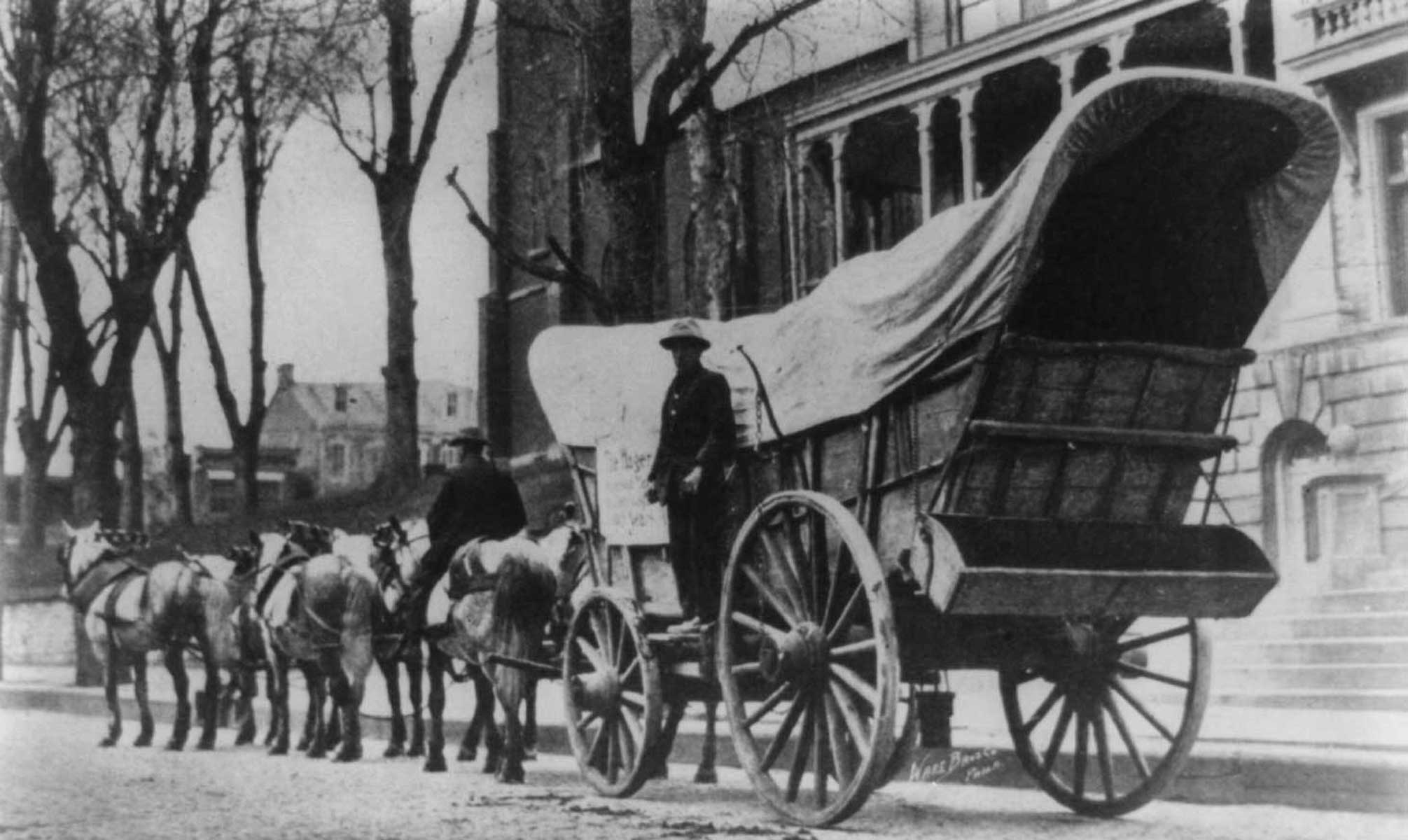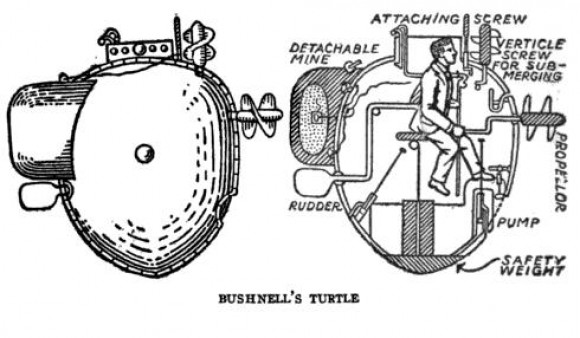Welcome, dear readers, to a time when powdered wigs were the height of fashion and the notion of a nation was being scribally penned on parchment rather than typed on screens Let’s embark on a frolic through the 18th century in what would become the United States of America, where the past is not just prologue, but a full-blown theatrical production.
The Dawn of Ingenuity
Imagine a land where every settler was a jack-of-all-trades, crafting their destiny with the same hands that might later pen a letter to the King, complaining about a new tax on tea. Here in the colonies, innovation wasn’t just necessary; it was as common as complaining about the weather. They adapted European tech with such gusto that you’d think they were trying to out-invent each other at every barn raising.
The Conestoga Wagon
Innovators: German settlers in Lancaster Co, PA
Year of Invention: Circa 1717

The Conestoga Wagon was not just any wagon, but the 18th-century equivalent of a heavy-duty pickup truck, if the truck bed was covered in canvas and had aspirations to become a sailboat. Crafted by the industrious German settlers, this beast of burden was so robust, it could cart around everything you’d need for a new life, assuming your new life required anvils, barrels of pickled herring, and perhaps a small cow. With wheels broad enough to handle the untamed wilderness but stylish enough for a farmer’s fashion show, the Conestoga didn’t just move goods; it moved the very idea of westward expansion, one bumpy trail at a time.
The American ‘Kentucky’ Long Rifle
Innovators:European immigrants, primarily of German and Swiss origin in Pennsylvania.
Year of Invention: Circa 1710-1720’s

Here comes the American Long Rifle, later known as the Kentucky Rifle, or as I like to call it, “The Sharpshooter’s Dream Stick.” Crafted by the wizardly gunsmiths of Pennsylvania, this wasn’t just any gun; it was the sniper rifle of its era, if snipers were into wearing racoon hats. With a barrel so long you could probably use it as a walking stick in a pinch, and grooves inside that spun the bullet like a top, a child’s toy, this rifle could pick off a hat from a mile away without disturbing the bird perched on it. It turned every frontiersman into a marksman, making it the go-to for anyone looking to whisper sweet nothings to their target from a distance.
Smallpox Inoculation
Innovators: Cotton Mather, Dr. Zabdiel Boylston, Onesimus, and many others
Year of Invention: 1721
Picture this: Boston, 1721, where the air was thick with not just the usual colonial bustle but also with the dread of smallpox. Enter Cotton Mather, not your average minister, but one with an ear for unconventional wisdom, thanks to his slave, Onesimus, who essentially was the Wikipedia of his time for smallpox inoculation and told Mather about inoculation techniques used in Africa. Amidst a sea of skepticism and the fear of turning into human pincushions, Dr. Zabdiel Boylston, with the bravery of a knight facing a dragon, decided to give the newfangled idea a go. He inoculated his own son and two slaves. The result? They didn’t kick the bucket, which was quite the medical breakthrough. This act didn’t just save lives; it was like planting the first seed of immunization in America, showing that sometimes, the path to progress is paved with needles and the courage to try something utterly terrifying.
Flexible Urinary Catheter
Inventor: Benjamin Franklin
Year of Invention: 1752

Benjamin Franklin, not content with just taming the lightning or inventing stoves, he turned his brilliant mind to less glamorous but equally essential world of medical gadgets. Enter the flexible urinary catheter, a device so ahead of its time, it could’ve been called “The Bladder’s Best Buddy” with a late-night infomercial. Crafted to aid his poor brother, who was more stone than man at this point, Franklin fashioned this lifesaver from flexible tubing. It was like sending in a tiny, bendy plumber to fix the pipes when things got, shall we say, ‘clogged up.’ This wasn’t just innovation; it was an act of brother love wrapped in the guise of early urological tech.
The 'Turtle' Submarine
Innovators: David Bushnell
Year of Invention: 1775

The ‘Turtle’ Submarine, a delightful contraption from the annals of naval warfare, resembling less a sleek instrument of ware and more a giant, adventurous acorn. Crafted by David Bushnell in the fervor of the American Revolution, this pioneering vessel was humanity’s first stab at underwater sneak attacks.
In Conclusion To American Ingenuity
As we anchor our time-traveling vessel back to the present, it’s evident that the 18th century in America was less about powdered wigs and more about the sparks of genius that lit the fuse of a nation. These inventors and their whimsical contraptions were the original trailblazers, setting the stage for centuries of innovation to come. They took the blank canvas of the New World and splashed it with colors of creativity, resilience, and a fair share of moxie.
From the sturdy wheels of the Conestoga wagon carving paths into the unknown, to the sharp crack of the Kentucky Rifle echoing through dense forests, every invention was a note in the symphony of progress. The daring souls who embraced smallpox inoculation showed that sometimes, bravery is the best medicine. Meanwhile, Franklin’s foray into medical devices proved that no problem was too small—or too personal—to tackle with a bit of ingenuity.
And let’s not forget the audacious plunge of the ‘Turtle’ Submarine, taking warfare beneath the waves and proving that when it came to out-of-the-box thinking, Americans were willing to dive deep—quite literally.
In wrapping up our frolic through this era of boundless imagination, one thing is crystal clear: the spirit of invention was—and continues to be—the heartbeat of America. These early innovators didn’t just lay the foundations of a nation; they ignited a legacy of perpetual curiosity and the relentless pursuit of the better, the faster, the more efficient.
So, dear readers, the next time you flip a switch, turn a key, or even swivel in your chair, take a moment to tip your tricorn hats to these pioneers. They remind us that progress is a journey fueled by dreams, daring, and occasionally, a submarine that looks like an adventurous acorn. Here’s to the original makers who proved that in the grand workshop of history, there’s always room for another brilliant idea.

